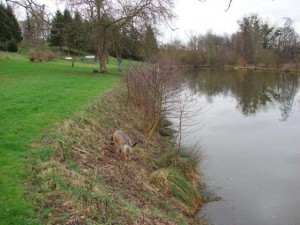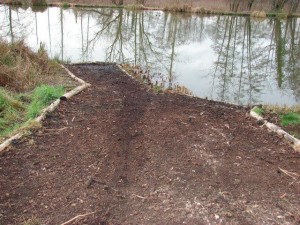 |
| Emmental |
Steph & Chris Dagg run Notaires & Alder lakes. Through this personal Blog, Steph is going to describe her experiences of moving to France and living the dream of many UK carp anglers.
Since this is the land of cheese (around 429 varieties I believe), I thought it was time I started to pay attention to fromage. So every now and again in this blog I’ll be looking at some of the more popular and/or unusual cheeses on offer.
But some groundwork to do first. Cheese comes in families in France, and there are anything between 3 and 8 of them, according to the source you look at. I’m going with the eight families, since we might as well do this properly!
1. Fresh cheeses – fromages frais
These are the white, rather runny cheeses with a high water content (up to 82%). They’re made without using rennet and aren’t aged at all. Familiar examples would be fromage blanc and Petit Suisse.
2. Soft cheeses with natural rind – Fromages à pâte molle et à croûte fleurie
Brie and camembert are examples of this family of soft cheese made from cow’s milk which has a distinctive floury rind. They’re aged for about a month.
3. Soft cheeses with washed rind – Fromages à pâte molle et à croûte lavée
These cow’s milk cheeses are literally washed during the aging process to stop surface moulds forming. They usually have bright rinds. Pont L’Évêque is such a cheese.
4. Pressed cheeses – Fromages à pâte pressée
Right, these cheeses are pressed while they age and this rids them of some of their moisture content. They’re also washed, brushed and turned to give them nice even rinds. Cantal is an example of this family of cheese.
5. Pressed and cooked cheeses – Fromages à pâte pressée et cuite
Emmental comes into this category. Cheeses in this group are heated before they’re pressed. They’re left to ripen for a long time.
6. Goat cheese – Fromages de chèvre
I don’t think this needs any more explanation! There are over 100 different types of French cheese made from goat’s milk.
7. Blue cheeses – Fromages à pâte persillées
These are the smelly cheeses (like the one I wrote about in this story) which are aged for a long time before they’re eaten. They have the distinctive blue veins running through them. Some are made from sheep’s milk, such as Roquefort. We visited that factory – I can still smell it!
You either love this type of cheese or hate it.
8. Processed cheeses – Fromages à pâte fondue
These are made from a blend of cheeses and often have herbs and flavourings added. Delicious Boursin falls into this category.
So that’s a quick introduction to the main groups of fromage.
This Tuesday’s cheese is Emmental, you know the one with holes in it. I usually buy this cheese pre-grated in 1 kg bags at the supermarket. We get through vast amounts of it. It’s one of the most popular and cheaper cheeses. It’s mainly produced in the east of France and the Emmental from certain areas (for example, france est central) has an IGP label (Indication Géographique Protégée – a quality mark). Not the sort that I buy though!
Almost half a million tonnes of Emmental are produced in Europe each year, and France makes approximately half of this, using 13.1% of all the milk produced in France. It takes 12 litres to make 1 kg of Emmental. It’s made in big loaves of up to 80 kg, which is a lot of cheese.
So where do the holes come from? Carefully controlled mice? Nope. A bacteria is introduced which produces carbon dioxide while the cheese is aging and this is what gives rise to them. So now you know.
It’s reckoned that on average, French people eat about 3.3 kg of Emmental a year. Well, if that really is the case then a lot of people can’t be eating anything like that much since we Daggs are heavily skewing figure upwards. We really do eat an awful lot of it! I blame the adverts that used to run in Ireland, funded by the cheese marketing board. ‘With cheese, please!’ was the motto, and the ads encouraged you to add a thick crust of grated, sliced or melted cheese coated cheese to everything you consumed, from your breakfast muesli to your evening mug of hot chocolate.
OK, I’m exaggerating, but only slightly! We’ve been totally brainwashed by them and have become cheese junkies as a result.
Now you know a bit more about Emmental. Do come back and discover another French cheese in next Tuesday’s blog.










 1. BIG JOHN
1. BIG JOHN 2. ARTHUR
2. ARTHUR 3. ARNOLD
3. ARNOLD 4. BENNETT’S
4. BENNETT’S 5. ROSE
5. ROSE